Launch Rail Pad 3D Model
January 1999
|
The launch rail is the conception of Brian Tripp and Thomas Olson as they brainstormed over a campfire at the Coyote Wells Test Site in the mid to late 1990's. Brian had an idea that maybe we could use heavy duty industrial cable raceways somehow for the pad structure. Tom worked up a design concept shown here using the text based POVRAY 3D Ray Tracing program. The guide rail uses a ten foot length of square extruded aluminum tubing and two pieces of ten foot lengths of aluminum extruded angles. The angles are riveted to the square tubing producing a 1/4" gap. The resultant gap facilitates 'H' shaped plastic guides (known as buttons) attached to the rocket. Tom has turned buttons from Delrin and from Nylon. This rail is attached to a piece of raceway on end which in turn is attached to another raceway; together acting as a gantry. The gantry is attached via 1/2" stainless steel rod in bearings to a superstructure acting as the pad. The structure is designed to be assembled and torn down quickly for transportation. The rocket slides onto the rail gantry and the whole gantry is tilted up and locked into position. An optional winch is intended to automate the raising of the gantry if rockets get too heavy. Brian obtained the cable runners and Tom obtained the extrusions, bearings, latches, winch and did the machining. Tom and Brian launched several experiemental rockets from this launch rail system at the Coyote Wells Test Site. |
Below are renditions produced by POVRAY.
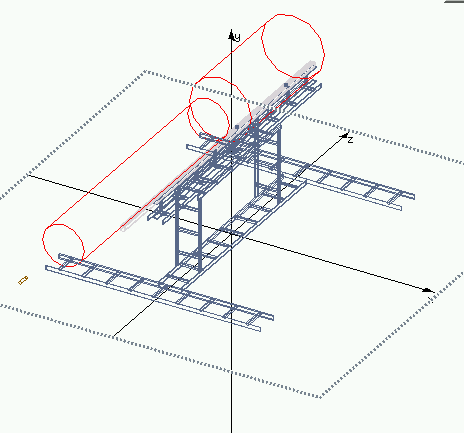
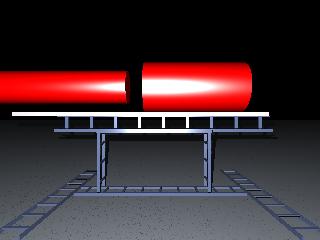
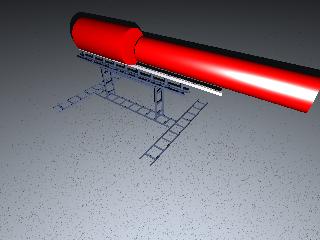
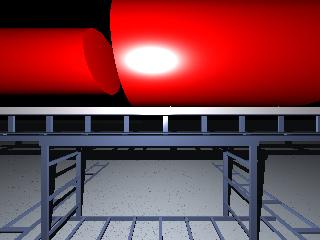
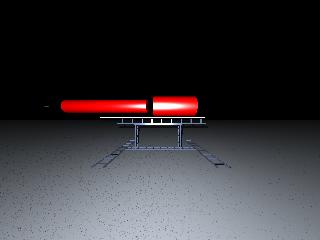

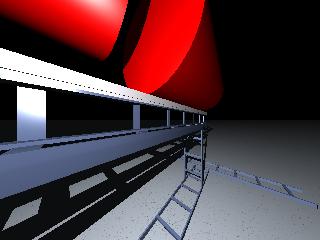
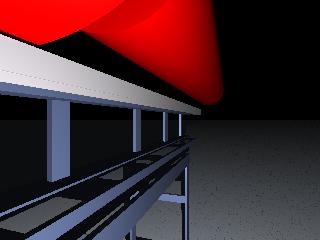
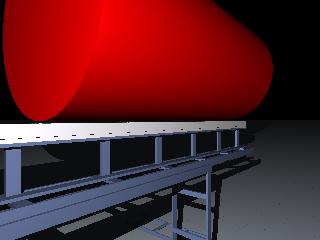
The finished rail